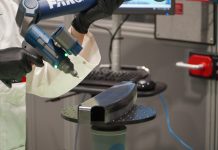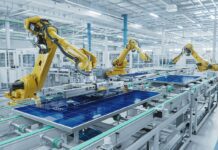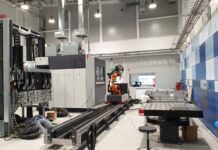Sponsored Content by
Part 3: Setting the stage for more innovation
Like its predecessors, Industry 4.0 is born from innovation. Also termed the Fourth Industrial Revolution, it builds on the technologies brought forward by the third industrial revolution – namely computers and automation – and enhances them with smart, autonomous systems fuelled by data and machine learning.
Industry 4.0 presents opportunities for business innovation at every turn. This is especially so in manufacturing, where the smart factory is emerging as the business and production model of the future. Smart factories are characterised by digital technology, real-time data-driven systems, automation and in some cases, artificial intelligence.
“Over the last five or six years, customers have moved on from simply thinking about how emerging tech can help them, to actively looking at implementing digital transformation,” says Simith Nambiar, Practice Lead – Emerging Technologies at Rackspace Technology.
Here’s how to begin setting the stage for more innovation in your smart factory transformation:
Implement innovation strategies from the top down
Smart factory transformations are typically multi-year, company-wide journeys that need to be driven by leadership.
Innovative solutions require a centralised transformation engine, cross-functional team engagement and rapid upskilling of sometimes thousands of employees. You can rapidly shift your facility’s way of working by running agile sprints, and simultaneously designing and implementing solutions framed by holistic governance.
Identify and implement ways to continuously improve processes, such as establishing an infrastructure team with the capability and mandate to build and manage standard templates, architectures and services, and identifying and empowering innovation leaders.
Incorporate artificial intelligence and machine learning
By making artificial intelligence and machine learning (AI/ML) and its capacity for high-quality automation and predictive intelligence part of your smart factory transformation, you can drive innovation to the next level.
Successful Internet of Things (IoT)-based innovation is illustrated by the smart factory transition of medical device company Cerapedics. With Rackspace’s help, Cerapedics built a proof-of-concept IoT solution that connected digital and analogue sensors, extracted data and sent it to a cloud hyperscaler for analysis and display. Next, it defined an optimal data model and built data ingestion, enrichment and storage pipeline.
This innovative approach enabled Cerapedics to achieve real-time and historical analysis that is scalable, cost-effective and resilient to outages – all with the end goal of improving the manufacturer’s yield of a breakthrough biologic bone graft.
Harness the knowledge of innovation experts
Identifying innovation, technology and smart factory thought and practice leaders to consult, partner, or engage with is essential.
“We are continuously bringing new offerings to market to close the gap so that we can meet the customer at the right place in their digital transformation journey,” says Nambiar. “The Rackspace IIoT Accelerator is a great example of how we are addressing digital transformation, particularly in the manufacturing sector.”
A pre-built, customisable solution that connects and collects data from the factory floor, analyses key metrics and displays them on a centralised dashboard, the Rackspace IIoT Accelerator enables operational personnel to have access to machine insights from the data that was once locked in silos by moving it into a central industrial data lake.
See the previous articles in the series: Part 1: Building the foundation and Part 2: Modernising the data architecture.




















